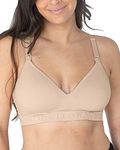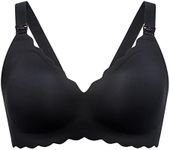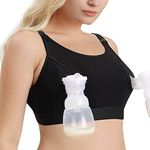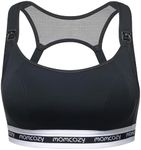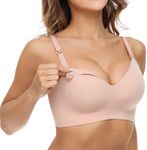Buying Guide for the Best Nursing Bras
Choosing the right nursing bra is important for comfort, support, and convenience during breastfeeding. A good nursing bra should make feeding easier, provide gentle support, and adapt to your changing body. When shopping, focus on how the bra feels, how easy it is to use, and whether it fits your lifestyle. Understanding the key features will help you find a bra that meets your needs and keeps you comfortable throughout your nursing journey.Fit and SizingFit and sizing refer to how well the bra matches your body shape and size. This is crucial because your breast size can change during pregnancy and breastfeeding. Nursing bras often come in standard sizes (like S, M, L) or traditional band and cup sizes. Some bras are designed to stretch and accommodate size changes, while others offer more structured support. To pick the right fit, measure yourself regularly and choose a bra that feels snug but not tight, with room for slight fluctuations. Comfort should be your guide—if the bra leaves marks or feels restrictive, try a different size or style.
Support LevelSupport level describes how much lift and hold the bra provides. This is important because breasts can feel heavier and more sensitive during nursing. Light support bras are soft and flexible, suitable for lounging or nighttime use. Medium support bras offer a balance of comfort and structure, good for everyday wear. High support bras have firmer bands and wider straps, ideal for larger busts or active days. Choose the support level based on your breast size, activity level, and personal comfort—if you feel discomfort or lack of support, consider a higher support option.
Access MechanismThe access mechanism is how you open the bra for breastfeeding. Common types include clip-down cups, pull-aside panels, or drop-down flaps. This feature is important for convenience and ease of feeding, especially when you’re out or in a hurry. Clip-down cups are popular for their one-handed operation, while pull-aside styles are simple and have no hardware. Think about when and where you’ll be nursing—if you need quick, discreet access, choose a style that matches your routine and comfort with the mechanism.
Material and BreathabilityMaterial and breathability refer to the fabric used and how well it allows air to circulate. This matters because sensitive skin and frequent nursing can lead to irritation or sweating. Cotton and bamboo fabrics are soft and breathable, making them comfortable for long wear. Synthetic blends may offer more stretch or moisture-wicking properties. If you have sensitive skin or live in a warm climate, prioritize natural, breathable materials. Always check for soft seams and tags to avoid irritation.
AdjustabilityAdjustability means how much you can change the fit of the bra, such as with adjustable straps or multiple hook settings. This is important because your body may change shape and size during nursing. Adjustable features let you customize the fit for comfort and support as your needs change. Look for bras with wide, padded straps and several hook options on the band. If you expect your size to fluctuate, or want a bra that adapts over time, adjustability will be a key feature.
Padding and LiningPadding and lining refer to the extra layers inside the bra. Padding can provide shape, modesty, and absorb leaks, while lining adds softness and comfort. Some nursing bras are unpadded for a natural feel, while others have removable pads for flexibility. If you want extra coverage or are concerned about leaks, choose a bra with light padding or removable inserts. If you prefer a lighter, more natural feel, an unpadded bra may be best.








